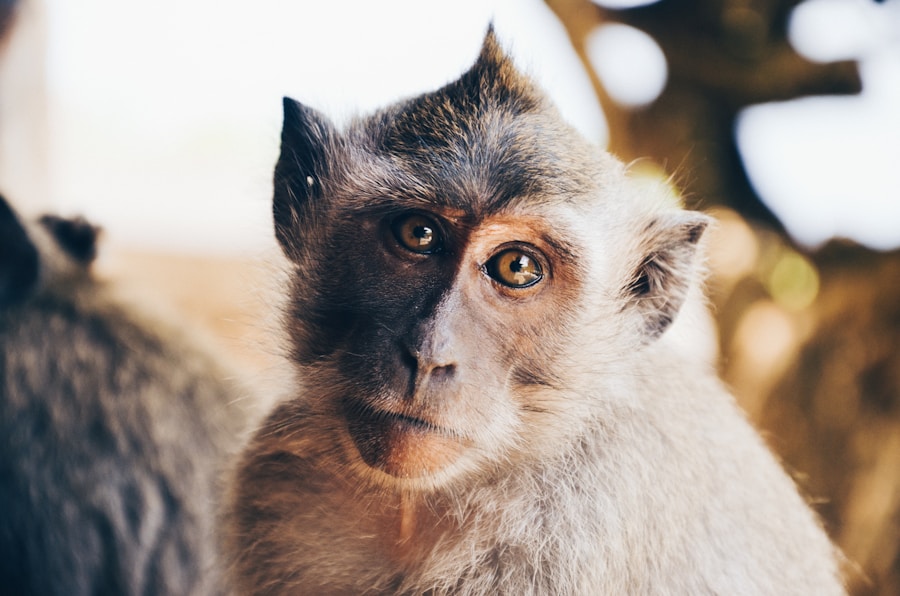ESCAPING THE NARCISSIST
Are you trapped in a toxic relationship? It's time to reclaim your life and find healing. ESCAPING THE NARCISSIST: HOW TO HEAL AND RECOVER FROM NARCISSISTIC ABUSE IN RELATIONSHIPS is your guide to breaking free and starting your journey towards recovery.
Don't let the pain control you any longer. Take the first step today and discover the strategies to overcome emotional abuse and rebuild your life. You deserve happiness and peace.
Start Your Healing Journey TodayThe term ‘flying monkey’ is often used to describe individuals who act as enablers or supporters of a narcissist, carrying out their bidding and perpetuating their abusive behavior. The term itself originates from the iconic film, The Wizard of Oz, where the Wicked Witch of the West sends her flying monkeys to do her bidding and attack Dorothy and her friends. In this article, we will explore the psychology behind group dynamics and the role of enablers in narcissistic abuse. We will also delve into the power of language and symbolism, and how the term ‘flying monkey’ reflects our understanding of abuse.
The Psychology of Group Dynamics: How ‘Flying Monkeys’ Fit In
Group dynamics refers to the interactions and relationships between individuals within a group. It involves the study of how people behave in groups, how they influence each other, and how group processes can impact individual behavior. In the context of narcissistic abuse, ‘flying monkeys’ are individuals who align themselves with the narcissist and act as their enablers or supporters.
In the narcissistic abuse cycle, the narcissist typically employs a variety of tactics to manipulate and control their victims. This can include gaslighting, manipulation, emotional abuse, and isolation. ‘Flying monkeys’ play a crucial role in this cycle by further isolating the victim and reinforcing the narcissist’s power and control. They may engage in smear campaigns against the victim, spread rumors or lies, or even directly attack or harass them on behalf of the narcissist.
The Role of Enablers in Narcissistic Abuse: A Closer Look
Enablers are individuals who knowingly or unknowingly support and enable the abusive behavior of a narcissist. They may be family members, friends, colleagues, or even strangers who have been manipulated or coerced by the narcissist. Enablers often have their own motivations for supporting the narcissist, such as fear, a desire for approval, or a need to maintain their own sense of power and control.
Enablers contribute to narcissistic abuse by reinforcing the narcissist’s behavior and validating their actions. They may provide the narcissist with a sense of validation and support, making it easier for them to continue their abusive behavior. Enablers may also actively participate in the abuse by engaging in gaslighting or manipulation themselves. In some cases, enablers may even become abusive towards the victim, further perpetuating the cycle of abuse.
The Power of Language: Why We Use the Term ‘Flying Monkey’
Language plays a powerful role in shaping our understanding of abuse and its dynamics. The term ‘flying monkey’ is an effective descriptor because it captures the idea of individuals who act as extensions of the narcissist, carrying out their bidding and attacking their targets. The term also conveys a sense of manipulation and control, as the flying monkeys are under the command of the narcissist.
Using the term ‘flying monkey’ helps to highlight the role of enablers in narcissistic abuse and brings attention to their actions. It allows us to recognize that these individuals are not innocent bystanders, but active participants in perpetuating abuse. By using this term, we can better understand and address the dynamics at play in abusive relationships.
The Symbolism of the Flying Monkey: What It Says About Us
The symbolism of the flying monkey extends beyond its origins in The Wizard of Oz. In popular culture, flying monkeys are often depicted as mindless minions who blindly follow orders without question. This symbolism reflects our understanding of abuse and how individuals can be manipulated and coerced into supporting abusive behavior.
The use of the term ‘flying monkey’ suggests that individuals who act as enablers may be under some form of psychological control or manipulation. It highlights the power dynamics at play in abusive relationships and challenges the notion that enablers are simply innocent victims themselves. By recognizing the symbolism of the flying monkey, we can gain a deeper understanding of the complexities of narcissistic abuse and the role of enablers within it.
The Dark Side of Loyalty: When ‘Flying Monkeys’ Become Abusive
While ‘flying monkeys’ are often seen as enablers or supporters of the narcissist, there are instances where they themselves become abusive towards the victim. This can occur when individuals become so loyal to the narcissist that they adopt their abusive tactics and behaviors. In these cases, loyalty becomes a tool for abuse rather than a positive trait.
When ‘flying monkeys’ become abusive, they may engage in gaslighting, manipulation, or even physical violence towards the victim. They may justify their actions by claiming they are protecting the narcissist or acting in their best interest. This further traumatizes the victim and reinforces the power and control of the narcissist.
The Impact of ‘Flying Monkeys’ on Victims of Narcissistic Abuse
The presence of ‘flying monkeys’ can have a devastating impact on victims of narcissistic abuse. These individuals may feel isolated, betrayed, and overwhelmed by the attacks and manipulation they face from both the narcissist and their enablers. The emotional toll of being targeted by a group can be immense and can further traumatize the victim.
The actions of ‘flying monkeys’ can also make it difficult for victims to seek help or escape from the abusive relationship. The victim may fear that no one will believe them or that they will face further retaliation if they speak out against the narcissist and their enablers. This can lead to a sense of helplessness and hopelessness, making it even more challenging for victims to break free from the cycle of abuse.
The Importance of Boundaries: How to Deal with ‘Flying Monkeys’
Setting boundaries is crucial when dealing with ‘flying monkeys’ and enablers in narcissistic abuse situations. Establishing clear boundaries can help protect the victim’s emotional well-being and prevent further harm. It is important to communicate these boundaries assertively and consistently, making it clear what behavior is acceptable and what is not.
When dealing with ‘flying monkeys,’ it is essential to remember that their actions are not a reflection of the victim’s worth or value. It can be helpful to seek support from trusted friends, family members, or professionals who can provide guidance and validation. Additionally, documenting instances of abuse and seeking legal advice may be necessary in some cases.
The Connection Between Narcissistic Abuse and Codependency
There is a strong link between narcissistic abuse and codependency, with ‘flying monkeys’ often perpetuating codependent behavior. Codependency refers to a pattern of behavior where individuals prioritize the needs and wants of others over their own, often at the expense of their own well-being.
In narcissistic abuse situations, ‘flying monkeys’ may enable the narcissist’s behavior because they have become codependent on them. They may rely on the narcissist for validation, approval, or a sense of purpose. This codependency can make it difficult for ‘flying monkeys’ to break free from the cycle of abuse and support the victim.
Healing from Narcissistic Abuse: Breaking Free from the ‘Flying Monkey’ Role
Healing from narcissistic abuse requires breaking free from the ‘flying monkey’ role and reclaiming one’s own power and autonomy. This process involves recognizing and addressing the dynamics of abuse, setting boundaries, seeking support, and engaging in self-care.
Breaking free from the ‘flying monkey’ role may involve distancing oneself from the narcissist and their enablers, seeking therapy or counseling to address the trauma and heal from the abuse, and developing a support network of individuals who can provide validation and understanding. It is important to remember that healing is a journey and may take time, but with the right support and resources, it is possible to break free from the cycle of abuse.
Moving Forward and Creating Healthy Relationships
Recognizing and addressing narcissistic abuse is crucial for creating healthy relationships and preventing further harm. By understanding the dynamics of abuse, the role of enablers, and the impact of ‘flying monkeys,’ we can better support victims and work towards breaking the cycle of abuse.
Creating healthy relationships involves setting boundaries, practicing self-care, and surrounding oneself with individuals who respect and value one’s autonomy. It also requires ongoing self-reflection and awareness to ensure that patterns of abuse are not perpetuated in our own behavior.
By challenging the power dynamics at play in abusive relationships and supporting victims, we can create a society that values empathy, respect, and healthy relationships.


